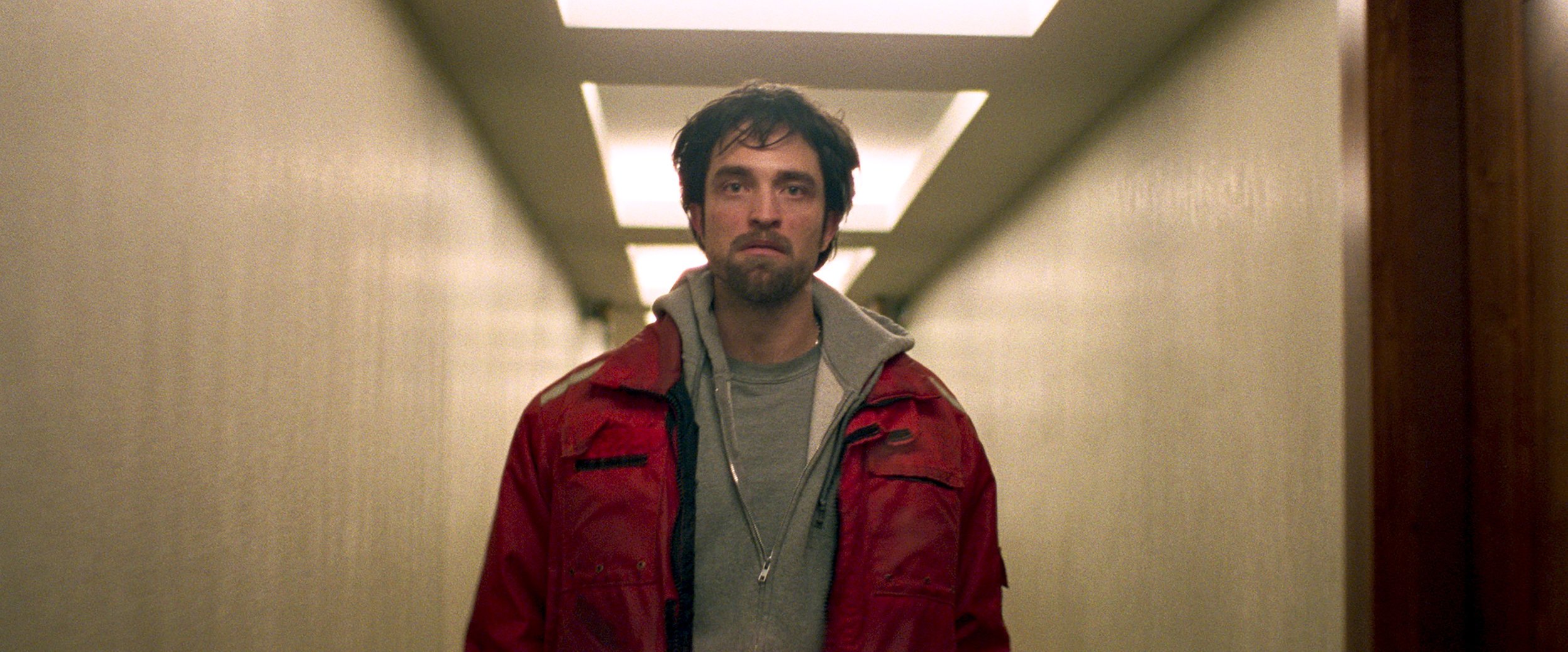The film, Good Time, directed by Josh and Benny Safdie and written by Josh Safdie and Ronald Bronstein, was one of the most unforgettable films of 2017. A Pop-Thriller that takes you on an overnight ride full of crime, deception and destruction.
Based in New York City, the film travels through many institutions. From banks to malls to hospitals and even amusement parks, all of the locations and settings feel authentic. The filmmaking brothers captured the underworld of the city and its unglamorous nature in one of the most original ways.
In an exclusive interview with Interiors, we spoke with Sam Lisenco, who is the Production Designer for Good Time. The images are property of Sam Lisenco and his team.
INT: First off, we were curious how the opportunity to do the film, Good Time, came about? What was it about it that made you want to work on it?
SL: The Safdie brothers and I have been incredibly close for many years, and went to college together. There was a period of about 10 years where I was either roommates with one or the other of them, and then was also sharing a space with them in Manhattan, where we made short films and commercial content together, in addition to the early features. I had been out in Los Angeles during production of their previous film, and jumped at the opportunity to come back and work with them again. Since we’re all originally from New York, I think there’s a shared sense of aesthetic that is borne out of having seen the city transition together in a very dramatic way. There’s a bit of a longing in our minds for the city that we grew up with, even though by many measures it has improved dramatically from what it once was. In some ways, this was a poem to that older version of New York, and in other ways it was a clear tribute to the kinds of films we had grown up with as well. I think at this point having breathed the same air as these guys for so long, that there’s a bit of a shorthand when it comes to how we look at the city and it’s denizens. That’s sort of the long answer. The short answer is that I’ve known the guys for so long, nowadays when they have a project coming up they just kind of call me when they’re ready and say ‘hey it’s time.'
GOOD TIME (2017)
INT: The Film uses many real locations in all five boroughs of New York. Did the Directors have a distinct vision as to where these locations, such as the Bail Bonds Office, New World Mall and Popular Community Bank, were going to be? What was the process like finding these various spaces?
SL: There was always a consideration to try to capture the kind of middle class enclaves that still exist in some of the outer boroughs of the city, and Queens was of great inspiration. Josh and Benny grew up in Forest Hills, and later moved into Manhattan in their teens, so I think there was a specific understanding of what the outer reaches of New York feel like accrued only from having gotten out of them and having moved to the big city at some point in their lives. I had a similar experience when I was a kid, having grown up in Brooklyn but going to high school in Manhattan. So I think in terms of how that bled into the words in the script some of those definitions were either clearly outlined or emotionally defined in a really strong way. We also were fortunate enough to have an incredibly talented location manager on the film, Samson Jacobson, who has an innate understanding of the different kinds of functioning cities all borne out of this one metropolis. Communication with him was incredibly natural. You could say things like ‘more putrid’ and ‘more like Shea Stadium’ and he would understand without pause. The practical nature of the environments in the film are a testament to his ability to digest the tonal shifts in the film in a really subtle and beautiful way.
GOOD TIME (2017)
INT: From Crystal’s grandmother’s house to the abandoned Amusement Park, the Production Design is exceptional. What was the inspiration for these locations? How did you incorporate different lighting into these areas?
SL: Thank you for saying that. Crystal’s grandmother’s house was probably the most fun set I’ve ever been involved in. The neighborhood I grew up in, in Brooklyn, went from lower middle class Italian to upper middle class Haitian, while my folks watched the world change around them. I recall an early conversation about the general direction for the space, before the actors were cast, and recall talking about those kinds of repurposed 1920’s row houses with no side windows that have bulbous furnishings that are inherently practical, if not sometimes too big for the rooms they’ve been crammed into. Josh had very particular opinions about what the sofa should look and feel like, and after many nights of looking into living room windows in my parents neighborhoods, kind of created the rest of the room to suit the couch. A huge debt to the set decorator on the film, Audrey Turner, who could spew out the viscous reality of those kinds of lifestyles with nothing more than a few hundred bucks and a cargo van. She really struck gold in various thrift stores and used furniture shops, and was able to make that interior feel so real and warm in a very shocking and overbearing way. There’s a sense of implied history in the smell of that room, CVS run after CVS run, dinner on the sofa after dinner on the sofa, etc. The gaffer, Danny April, is one of the most talented people I’ve ever run across. Every interior in that film has such a gorgeous sense of surreal reality with the numbers of practical elements in deep hues. Because the Safdies like to be able to explore such intense environments with a small crew and work through sequences that grow as they work, there was always a conversation about to make sure that Danny and I were on the same page about practical lighting, and that he felt he could apply a poetic paintbrush to what would otherwise seem like a very realistic environment.
GOOD TIME (2017)
INT: The Tivoli Towers is another location that appears near the end of the Film. The interior design of the Apartment space mixed with the distinct Architectural exterior creates a unique juxtaposition. Was this intentional? Also, was the mazelike ramp structure that Connie runs through incorporated into the film after the location was chosen?
SL: I have to be totally frank, a lot of people ask me about this set. But secretly we found it as is. All we did was bring in the coffee table. Suffice it to say that the emotional break from the overbearing nature of the rest of the film up to that point, and the poignancy of it being a temporary safe aesthetic haven for these characters wasn’t lost on us at all, but when you find an interior like that, I like to think that you have a moral obligation to make sure it gets on film. We had known that as an exterior an oppressive brutalist apartment complex would work for the film, it just happened to be a happy accident that that oasis existed inside.
Sam Lisenco is a Production Designer and has worked on various Films and Commercials. You can visit his Website to see more of his work.




